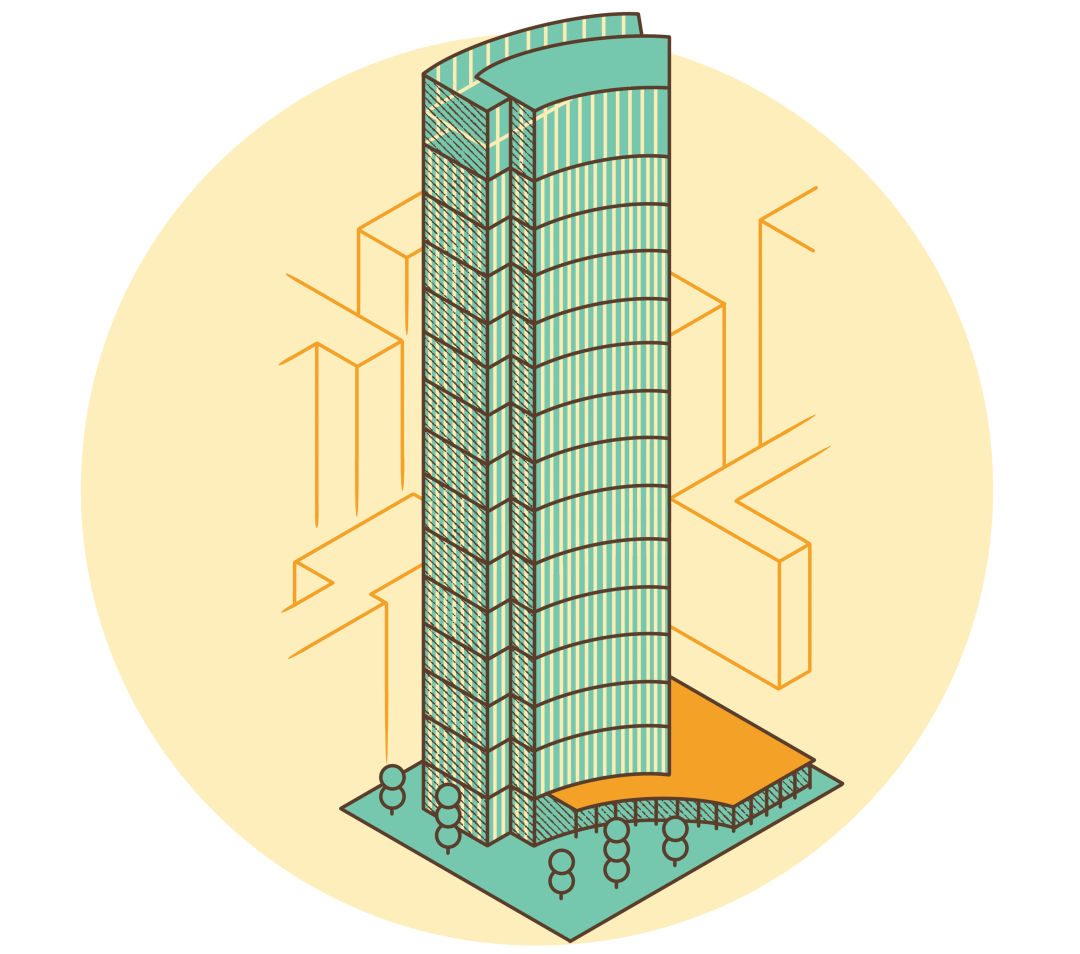WHen Bruce Harrell rises from his desk on the 7th floor of Seattle City Hall and saunters over to an adjacent west-facing deck, the new mayor looks out at some of the city’s most storied sights. The Arctic Club. SmithTower. Puget Sound. But if he looks down, he has a bird’s-eye view of a bureaucratic pitfall: an undeveloped crater that spans a whole downtown block.
Earlier this year, Harrell inherited a political headache that a handful of predecessors failed to remedy. Since 2005, the city has struggled to secure new construction on the former Public Safety Building site at 601 Fourth Avenue. It’s more than just an eyesore. With tents pitched around its perimeter amid a yearslong housing emergency, it’s a glaring waste of space to address a crisis.
The vacant lot hath sat empty for so long that trees now rise from its depths. How many more rings will they grow?
Digging a Ditch
2005—The city dismantles its Public Safety Building.↓

A successor to the police department’s handsome flatiron HQ nearby, this 14-story steel structure opened its doors in 1951. Almost immediately it encountered problems with plumbing and plaster falling from the walls. In 1988 Downtown office space tycoon Martin Selig offered to knock down the Public Safety Building for free if a park or plaza replaced it (the city demurred). By 1994 mayor Norm Rice considered the building, which encompassed the block between Third and Fourth avenues and Cherry and James streets, at risk of collapse during an earthquake. Five years later, a “Civic Center Master Plan” called for its replacement, with a new Justice Center and City Hall opening in the vicinity during the early 2000s.
2007—Mayor Greg Nickels brokers a complicated deal with Triad Development to build a 43-story high-rise on the empty site with 125 or so condos, office space, a retail pavilion, and, crucially for local pols, a public plaza.
2008—Financing for the Civic Square project dissipates amid the Great Recession. Permitting and design reviews also hold up the start of construction.
2012—The project is canceled due to inactivity, but Triad retains rights to the job.
2015—Mayor Ed Murray pledges to end the city’s relationship with the developer after a city council candidate accuses a Triad employee of a shake-down: help in settling a tenants group’s lawsuit against the firm in exchange for killing an opposing PAC’s donation.
2016—Due to legal vulnerability, Murray can’t quit Triad. Multiple transfers of project rights to other developers fall through.
2017—British Columbia-based Bosa Development agrees to build a 58-story residential tower with a 25,000 square-foot plaza on the site, paying the city $16 million for ownership of the entire block and $5.7 million-plus in fees for affordable housing.↓

$500 – $5,000
Amount Bosa Development must pay the city per day if the project is not finished on time. The developer has another year to complete the plaza and three more to top-off the tower. But the agreement allows for extensions in the event of “adverse market conditions” (see: pandemic) and permitting delays.
2019—The sale is closed. The city no longer owns the property.
2022—Bosa Development has applied for multiple phased building permits that the city is reviewing, but construction has not yet begun.



